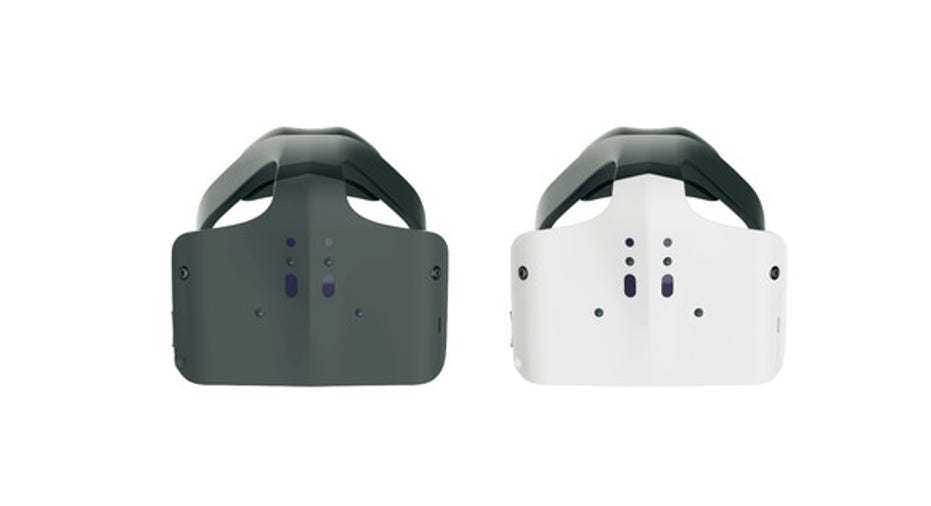Why Intel Corporation Is So Excited About Virtual Reality

One of the most talked-about areas in technology today is virtual reality. Many of the key hardware and software industry players seem to take every chance to talk about the opportunities that virtual reality will open to their businesses, and microprocessor giant Intel (NASDAQ: INTC) is no exception.
At Intel's Feb. 9 investor meeting, Murthy Renduchintala, Intel's president of Client and Internet of Things and System Architecture (CISA), presented a slide summarizing how virtual reality adoption could benefit the company's business. Let's take a closer look.
Intel's Project Alloy virtual reality headset. Image source: Intel.
VR headset growth and performance requirements
Intel said, citing data from market research company IDC, that sales of virtual reality headsets that connect to personal computers are "growing at a 70% [compounded annual growth rate]."
Now, the current wave of personal computer virtual reality headsets is relatively new (though virtual reality headsets in general have been around for ages), so it's natural that growth is going to be extremely fast off a low base early on.
Nevertheless, if we assume for now that virtual reality adoption will continue to be strong for the foreseeable future and that it will impact some personal computer buying decisions, then it's not hard to understand why Intel seems so excited.
According to Intel, the "baseline" processor required for a good virtual reality experience is a Core i3-7100. The company says that in a performance test known as VR Mark, its higher-priced Core i5-7600K chip delivers up to 23% better performance. The even more expensive Core i7-7700K, the company says, delivers up to a 36% boost in performance over the Core i3-7100 (though simple math says that the i7 is only good for an 11% boost in performance over the Core i5).
Intel's point here is that there are supposedly tangible performance benefits in virtual reality applications that arise from faster processors, which could encourage personal computer buyers to choose higher-performance -- and thus higher-priced -- chips.
For some additional perspective, Intel's Core i3-7100 is a $120 chip when purchased individually at retail, the 7600K comes in at $240, and the 7700K can be had for $350. Given the significant price deltas between the Core i3, i5, and i7 chips, to the extent that customers buy up the product stack for VR, the better Intel's revenue and profits should be.
A potential caveat
I imagine that users interested in buying personal computer virtual reality headsets very heavily overlap with those who build personal computers targeted at gaming applications.
Intel is clearly enjoying a benefit today from the growth in gaming personal computers -- the company routinely says that sales of chips into such computers continues to grow at a double-digit pace -- but I have a hard time believing that virtual reality adoption will be significantly additive to that growth.
Remember, gamers tend to buy high-performance products to begin with, so the same kind of person who's likely to spend $800 on an HTC Vive probably already has a fast gaming-capable computer with a fast Core i5 or Core i7 chip.
10 stocks we like better than IntelWhen investing geniuses David and Tom Gardner have a stock tip, it can pay to listen. After all, the newsletter they have run for over a decade, Motley Fool Stock Advisor, has tripled the market.*
David and Tom just revealed what they believe are the 10 best stocks for investors to buy right now... and Intel wasn't one of them! That's right -- they think these 10 stocks are even better buys.
Click here to learn about these picks!
*Stock Advisor returns as of February 6, 2017
Ashraf Eassa owns shares of Intel. The Motley Fool recommends Intel. The Motley Fool has a disclosure policy.